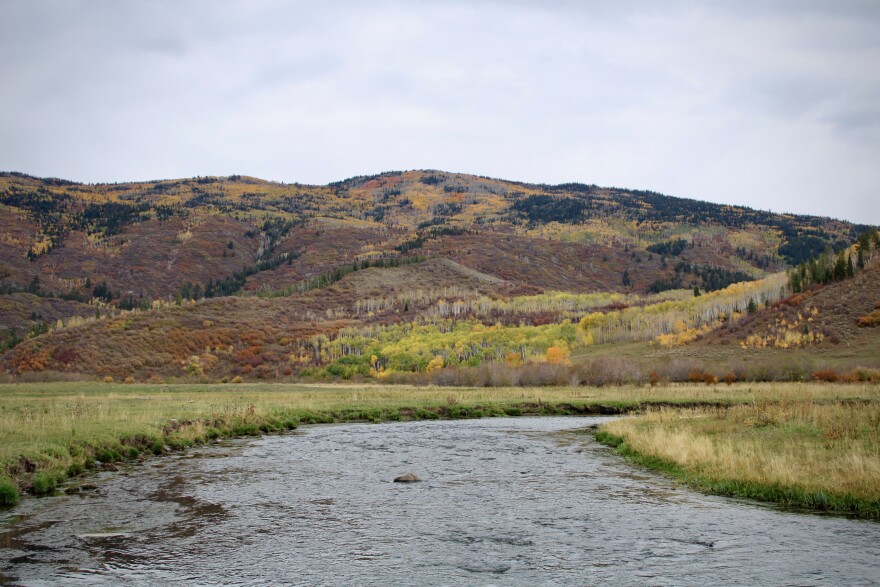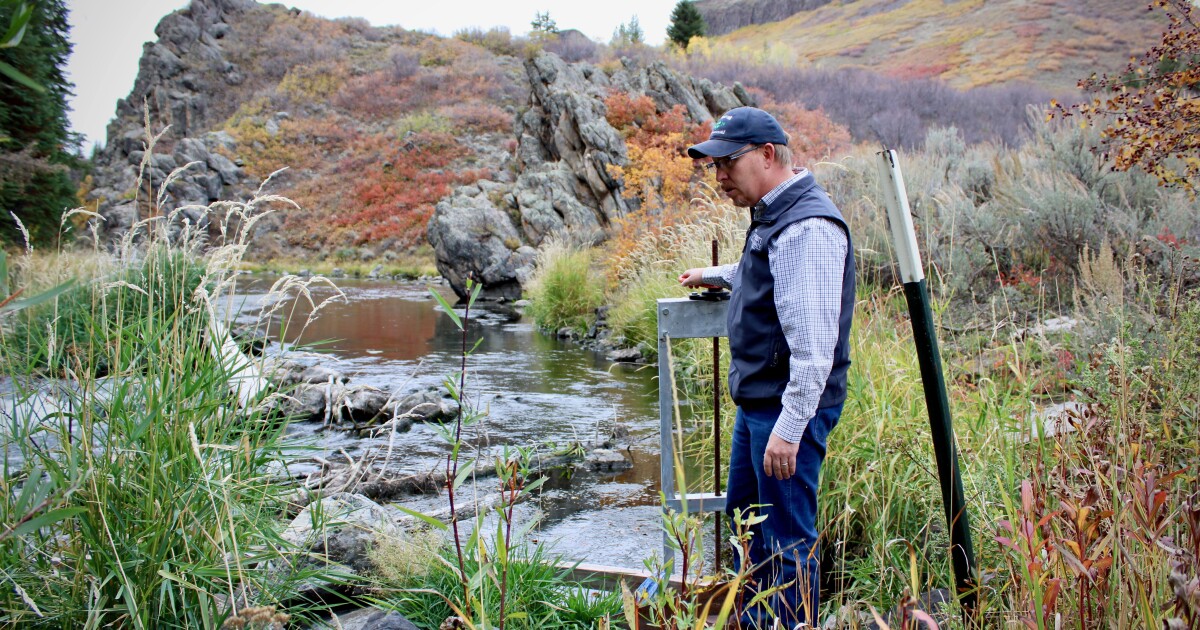[ad_1]
When you’ve been coming to the same place for decades, it’s easy to notice changes. On that ranch near Steamboat Springs, Colorado, telltale signs of drought are everywhere. Todd Hagenbuch stands beside a silent, dusty creek bed, where golden grasses and brush begin to reclaim the thin channel.
“Typically you would see some water all summer long,†he said. “It has been dry all summer.
The Hagenbuch family has been farming this land for 75 years. This stream flows into the Yampa River, which meanders through the property.
“It’s quite shocking,†he said. “I’m in my mid-forties, I remember coming here when I was little, moving rocks and playing in the water. My kids this year didn’t have that opportunity, and it is a sad situation. ”
On a working ranch, it’s more than sad. This kind of shortage can reduce the results. This year, the herders at the Yampa spring struggled to produce enough hay to get through the winter. Instead, they have to buy tons of hay, trucked in from other areas. It is not the first year that dry conditions have wreaked havoc on the economy, and it is unlikely to be the last.
“If you can get a few good years with some of the bad years,†Hagenbuch said, “you can get over some of that. But we’re due for a good year.â€
Western producers have persisted for a long time through the ups and downs of the dry years, but a two-decade-long drought trend in the region is now taking hold with no clear end in sight.
This year is unlikely to bring any major relief.
Forecasters say this winter will be shaped by “La Niña”, a meteorological phenomenon during which the cold water off the Pacific coast alters temperature and precipitation in the western United States. Its effects are hardly guaranteed, but usually mean a colder and wetter winter for the northwestern part of the country and a warmer, drier winter in the southwest. The dividing line often falls in the middle of Colorado.
“In general, this means that the mountains in the north would be more likely to have a better winter season and that the mountains in the south – the San Juan mountains, the Sangre de Cristos – might not have as many,” said Becky Bolinger, Assistant of State. climatologist at Colorado State University.
She warned that it was difficult to predict the weather with a high degree of certainty, describing the region’s erratic patterns as “a roll of the dice,” but historical records suggest it will likely leave the Colorado River Basin longer. warm and drier than normal this winter.

“Although we depend on the (summer) monsoon,†Bolinger said, “especially to help fill in those soils before we get into the cold season, we really need that snowpack to really dig like it. ‘Arizona did it with its monsoon season. ”
Bolinger was referring to this year’s historically wet summer in Arizona – where parts of a state with millions of Colorado River water users were inundated with record rainfall totals. Tucson, for example, had its wettest calendar year in history. July was the second wettest month in the state ever.
A recent conversation with Erinanne Saffell, Arizona State climatologist at Arizona State University, was recorded by a late summer storm.
“A cell has just opened above my house,” she told Zoom. “It’s raining cats and dogs over there, and I want to go look out the window.”
But La Niña conditions mean storms like this are unlikely to last. La Niña conditions consistently provide warm, dry winters to Arizona – more predictable than conditions in Colorado. Concrete example – last winter, when La Niña left the “very, very, very dry†region.
“If we have that again,†Saffell said, “then we’re going to maintain this drought for the long term. We don’t have the ability to alleviate some of that.â€
Ultimately, even a strong and rainy winter in the desert would not reverse the drought in a lasting way.
“Arizona has been in these drought conditions since the mid-90s,†Saffell said. “To fully emerge from these conditions, we would need a few seasons of above average precipitation.”
And in the grand scheme of the Colorado River Basin, the wet seasons in Arizona are literally a drop in the bucket. Before supplying farms and taps to Mexico, most of the river’s water begins as rain and snow in the mountains of Wyoming and Colorado. In the long run, Bolinger says climate change will lead to shorter winters, warmer temperatures and drier soil.

“We know that we are going to have an increasing frequency of droughts and we have seen it over the past 20 years,” she said. “This is something that will continue.”
In Steamboat Springs, this dry creek bed on Todd Hagenbuch’s property won’t be the last to lose its water. He sees this as a sign of things to come in other parts of the West.
“Where it would normally contribute just a little, which contributes to the river, which then contributes to the Colorado River and the whole basin,†he said. “It’s just another signal that things are dry and we shouldn’t expect so much water in the river when places like this go dry.”
To turn the tide in the Colorado River Basin and bring more water to the people who depend on it, it will take years of above-average rain and snow where it matters most.
This story is part of the Continuing Water Coverage in the West, produced by KUNC in Colorado and supported by the Walton Family Foundation. KUNC is solely responsible for its editorial coverage.
Copyright 2021 KUNC. To learn more, visit KUNC. 9(MDEwODI1MTE0MDEzNTk1NjQ4ODc4OTk0Ng004))
[ad_2]

